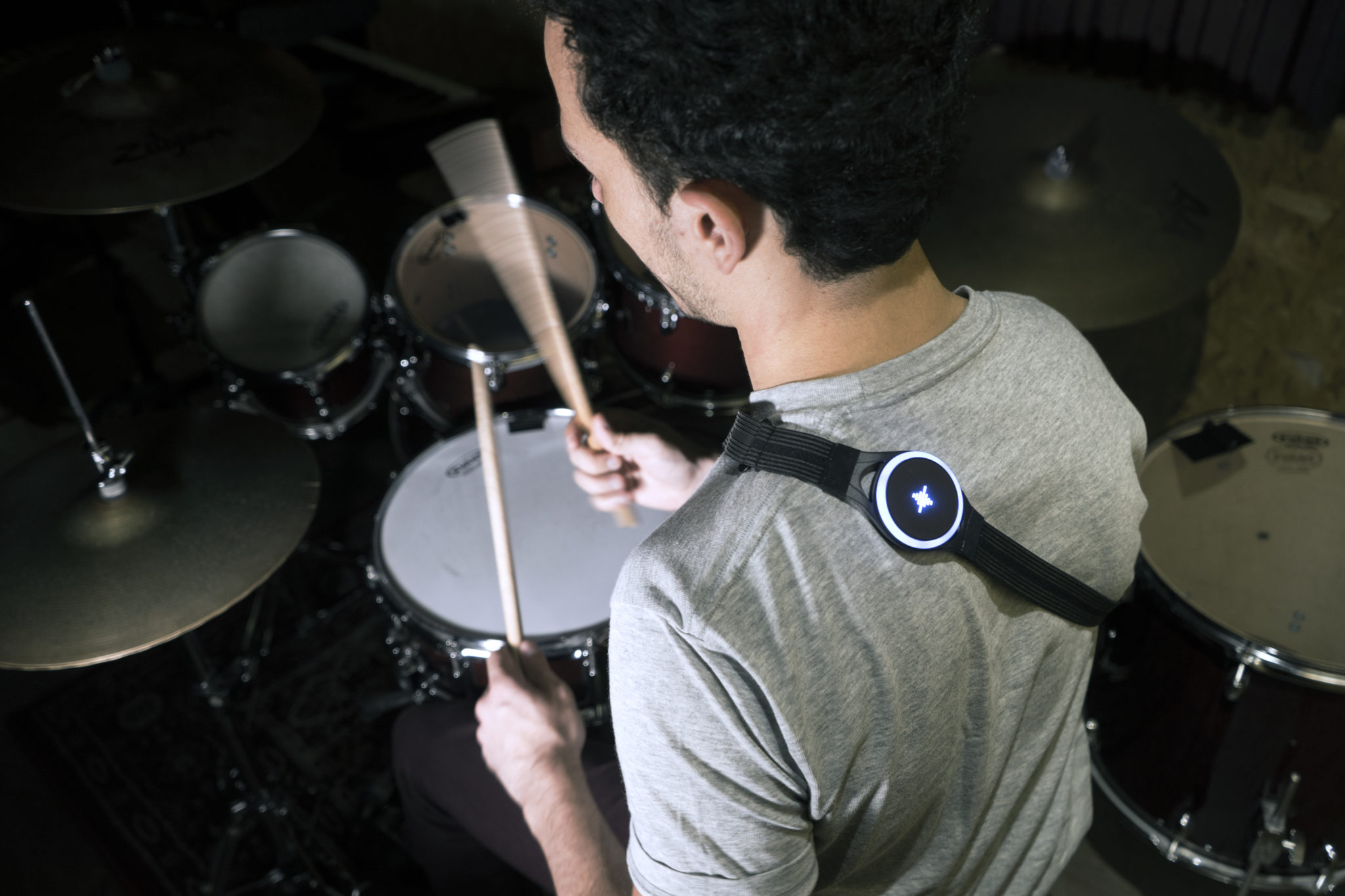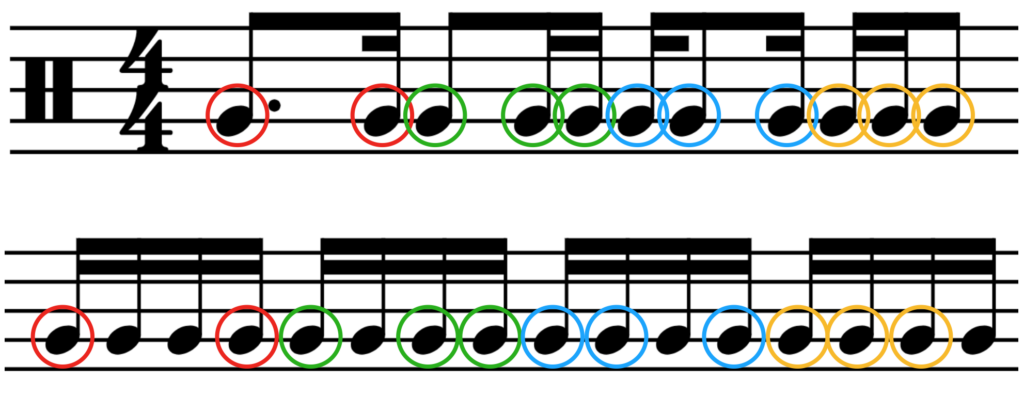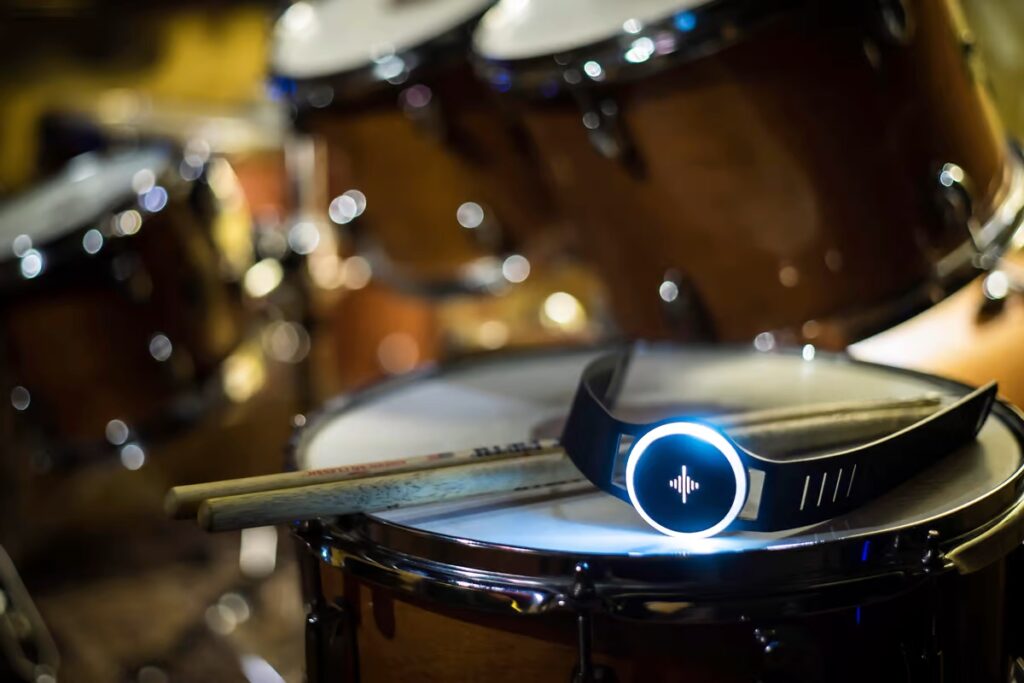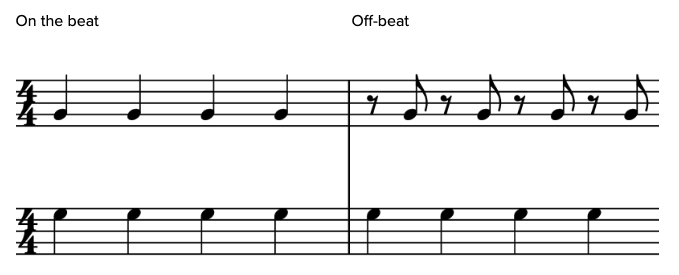
Needless to say, the metronome is an essential tool during drum practice. It helps you become time-consistent, improve your internal clock, and monitor progress. We’ve listed 5 simple tips here, but keep on reading to learn how to actually practice your patterns with a metronome!
If you are playing in 4/4, chances are your metronome is set to a quarter note. While this is usually the correct thing to do, practicing with the metronome set to 8th or 16th notes will help you get better at patterns you’re struggling with. Look at the rhythm below. Think it’s complicated?

All you have to do is set the metronome to 16th notes and check the notes that fall together:

Now, practice this pattern while counting up to four and emphasizing the notes that fall together: ONE two three FOUR – ONE two THREE FOUR – ONE TWO three FOUR – ONE TWO THREE four.

A vibrating metronome has a few advantages over the classical “click” metronome. First, most musicians would agree that clicks can become rather annoying with time. They aren’t particularly pleasant for the people you live with, or your neighbors if you have thin walls. Of course, you can still use headphones, but you might not hear every element of your performance and risk distancing yourself from the actual music.
Then, because your ears have to focus on the clicks, it’s easy to get distracted from how you actually sound. You might end up not paying enough attention to volume, accents, and other dynamic changes.
Finally, it’s one thing to hear and follow the metronome, but it’s another to feel it. Our vibrating metronome, Pulse, sends vibrations directly to your skin. It will allow you to play along naturally and provide a holistic environment for music-making.
Instead of breaking down the pattern into smaller divisions, do the opposite and think of small divisions as bigger groups. For example, if you are still playing in 4/4, try setting the metronome to a half note or even a whole note. This will help you get used to the space between each beat and work on your internal clock. Needless to say, it will also allow you to feel the phrases and patterns as a whole, and thus improve your phrasing.
We always rely on the metronome to give us the beats, so why not reverse the trend? It will be confusing in the beginning, but it’s a fun exercise.
Say you are still playing in 4/4, the beats are four quarter notes per bar. You don’t have to change anything on your metronome; you just have to feel the metronome falling on the off-beats. Here is an illustration:

Here’s a more detailed, visual explanation of the exercise.
Recording yourself will offer you a better understanding of the tempo mistakes you might be doing and where exactly they occur. It might reveal new details in your playing that you wouldn’t have noticed otherwise. Additionally, it will allow you to play under pressure, which can be beneficial in many ways: bring change to your practice, allow progression check, and reduce guesswork.
Simply record something you’re working on and listen back to the recording. Use a metronome to check if your tempo is consistent, and look for the spots where you tend to rush or drag.
Anja Drozdova is a Swiss-Russian musician and music teacher. She focuses on finding creative ways to engage students during piano and music theory lessons by using different mediums such as technology and visual arts. Anja also writes electronic pop music under the artist name Mlkshk. Her music is inspired by everyday life, scenes from childhood, and imaginary places, shapes and colors.
Soundbrenner is a company dedicated to helping musicians stay focused on what truly matters: their music. By creating innovative devices, such as Soundbrenner Pulse and Core, our goal is to deliver the best possible practice experience for musicians. Click here to find out more.
Got a question about Soundbrenner wearables? Reach out to us at [email protected], we’re happy to help!